Affordable housing in outer space: Scientists develop cosmic concrete from space dust and astronaut blood
Thursday, 16 September 2021 14:00 Transporting a single brick to Mars can cost more than a million British pounds - making the future construction of a Martian colony seem prohibitively expensive. Scientists at The University of Manchester have now developed a way to potentially overcome this problem, by creating a concrete-like material made of extra-terrestrial dust along with the blood, sweat and tears of astronauts.
In
Transporting a single brick to Mars can cost more than a million British pounds - making the future construction of a Martian colony seem prohibitively expensive. Scientists at The University of Manchester have now developed a way to potentially overcome this problem, by creating a concrete-like material made of extra-terrestrial dust along with the blood, sweat and tears of astronauts.
In 'Many will follow': SpaceX sends all-civilian crew into orbit
Thursday, 16 September 2021 14:00 A SpaceX Falcon 9 rocket carrying four space tourists blasted off Wednesday night from the Kennedy Space Center in Florida for the first mission to orbit the globe with an all-civilian crew.
A huge fireball illuminated the sky as the rocket's nine engines began to pull away from Earth at 8:02 pm (0002 GMT Thursday).
Around 12 minutes later, the Dragon capsule separated from the rocket's
A SpaceX Falcon 9 rocket carrying four space tourists blasted off Wednesday night from the Kennedy Space Center in Florida for the first mission to orbit the globe with an all-civilian crew.
A huge fireball illuminated the sky as the rocket's nine engines began to pull away from Earth at 8:02 pm (0002 GMT Thursday).
Around 12 minutes later, the Dragon capsule separated from the rocket's Notre Dame to lead $25 million SpectrumX project; first NSF Spectrum Innovation Initiative Center
Thursday, 16 September 2021 14:00 The explosion of wireless applications enabled by advanced radio technologies has placed access to a key natural resource, the radio frequency spectrum, at a premium.
In the United States and around the world, radio frequencies are allocated to a variety of services such as mobile broadband, broadcasting and navigation (GPS) that are now mainstream and widely used. But the increasing deman
The explosion of wireless applications enabled by advanced radio technologies has placed access to a key natural resource, the radio frequency spectrum, at a premium.
In the United States and around the world, radio frequencies are allocated to a variety of services such as mobile broadband, broadcasting and navigation (GPS) that are now mainstream and widely used. But the increasing deman Quest airlock | Space Station 360 (in French with English subtitles available)
Thursday, 16 September 2021 12:30 Video:
00:01:34
Video:
00:01:34
ESA astronaut Thomas Pesquet takes you on a tour of the International Space Station like no other. Filmed with a 360 camera, the Space Station 360 series lets you explore for yourself alongside Thomas’s explanation – episode four is NASA’s Quest airlock.
The Quest airlock is the Station’s smallest module, but it is vital for going on spacewalks. This is where the astronauts suit up into their spacesuits, prepare for the spacewalk and enter the airlock to go outside for maintenance, installing new equipment or science experiments.
Follow Thomas: https://blogs.esa.int/exploration/it/category/astronauts/thomas-pesquet/
The video is in French, to activate the English
Image: Combined tests start for Ariane 6 at Europe's Spaceport
Thursday, 16 September 2021 12:00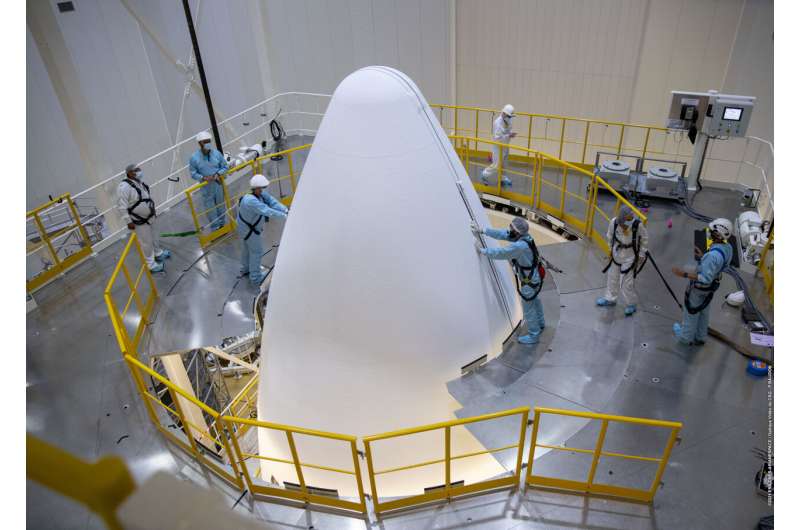
Europe's Spaceport in French Guiana is performing the first combined test in preparation for the inaugural flight of Ariane 6, Europe's new generation launch vehicle.
This test confirms the operations and electrical and mechanical equipment required for integration of the upper part of the launch vehicle. The procedures are carried out in conditions representative of a launch campaign. A major step of this test involves the closure of the Ariane 6 fairing around the payload.
Preparations started in May 2021 with a de-risking campaign of the mechanical operations.
The fairing, built by Ruag Space in Switzerland, stands 20 m high and 5.4 m in diameter. It protects payloads from the thermal, acoustic and aerodynamic stresses on the ascent to space.
This combined test was performed using a new integration dock, composed of a large white frame, with two mobile platforms adjustable to any level and accessible by fixed stairs and platforms, developed by the French space agency, CNES.
The assembly building has two halls: one for integration of the fairing and another where the payload is stowed in the fairing.
Soundblasting a satellite – time-lapse of testing
Thursday, 16 September 2021 11:50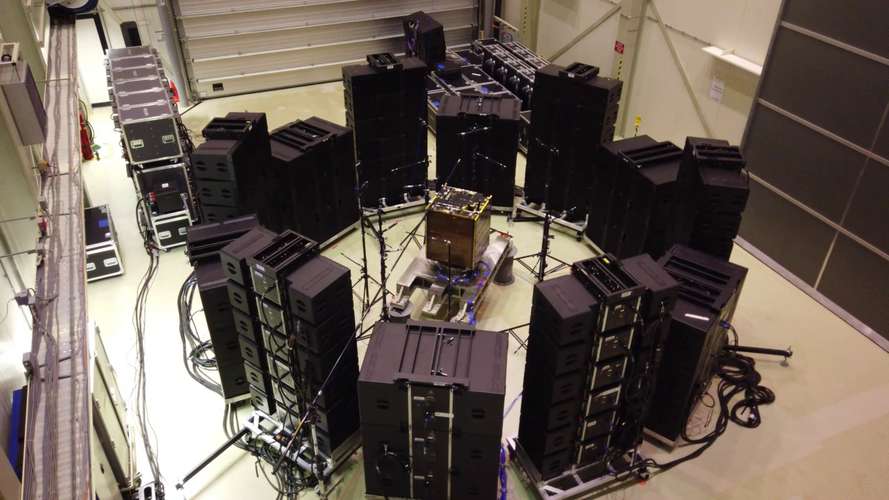 Video:
00:03:01
Video:
00:03:01
Verifying that a satellite will resist the sheer noise of the rocket launching it into orbit is a very important test that every mission must successfully pass.
“Typically satellites are tested inside purpose-built reverberant chambers, such as ESTEC’s own Large European Acoustic Facility sometimes described as the largest and most powerful sound system in Europe,” explains ESA test facility expert Steffen Scharfenberg, overseeing the test campaign together with ESA mechanical engineer Ivan Ngan. A very powerful noise generation system produces a uniform noise field thanks to the reverberation on the thick concrete walls of the chamber.
ESA has
ESA to be anchor customer on commercial lunar satellite
Thursday, 16 September 2021 11:22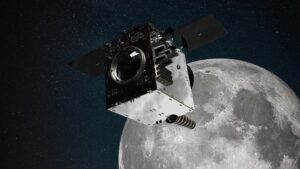
The European Space Agency has signed a contract with Surrey Satellite Technology Ltd. (SSTL) to be the anchor customer on a commercial lunar communications satellite that company is developing.
What’s going on with the ozone?
Thursday, 16 September 2021 10:10
World governments agreed in the late 1980s to protect Earth’s ozone layer by phasing out ozone-depleting substances emitted by human activities, under the Montreal Protocol. The phase out of these substances has not only helped protect the ozone layer for future generations but has also protected human health and ecosystems by limiting the harmful ultraviolet radiation from reaching Earth. On 16 September, the International Day for the Preservation of the Ozone Layer, we take a closer look at this year’s ozone hole.
On National Security | Small businesses doing big things in DoD space programs
Thursday, 16 September 2021 09:00China rolls out cargo mission rocket as Shenzhou-12 astronauts leave space station
Thursday, 16 September 2021 07:46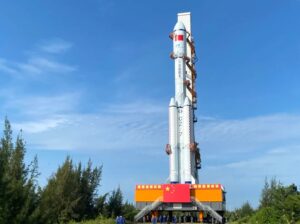
China is preparing to launch its second space station cargo mission just as its Shenzhou-12 astronauts are set to return to Earth.
3 crew leave China's space station for Earth after 90 days
Thursday, 16 September 2021 07:15
Three astronauts who lived for 90 days on China's space station departed Thursday in preparation for returning to Earth.
The national space agency said Nie Haisheng, Liu Boming and Tang Hongbo boarded the Shenzhou-12 spacecraft and undocked from the space station at 8:56 a.m. Thursday (0056 GMT).
State broadcaster CCTV aired footage of the astronauts securing packages inside their spacecraft, which is due to parachute to a location in the Gobi Desert near the Jiuquan launch center on Friday.
Path set for commercial communications around the Moon
Thursday, 16 September 2021 07:13
ESA confirmed a contract signature yesterday with Surrey Satellite Technology Ltd (SSTL) to be the main customer for their Lunar Pathfinder satellite launching in 2024 that will provide communications services around the Moon.
Contest winners, health worker orbiting world in SpaceX 1st
Thursday, 16 September 2021 06:49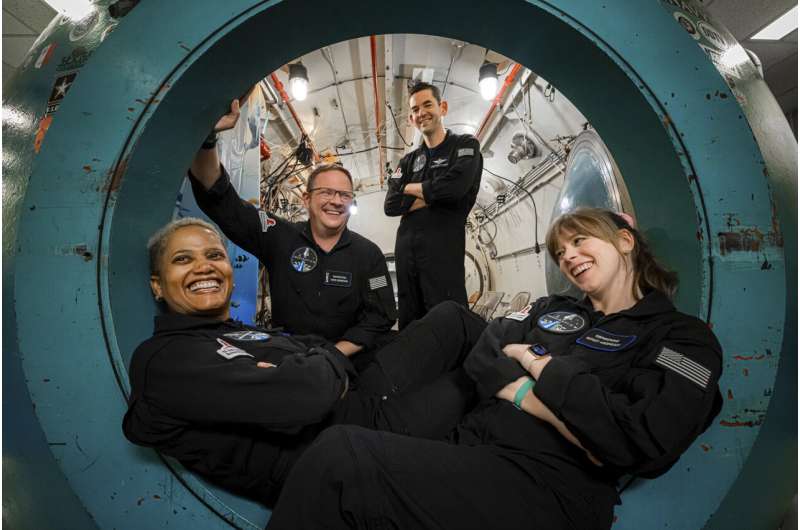
The four people on SpaceX's first private flight are fairly ordinary, down-to-Earth types brought together by chance.
They'll circle Earth for three days at an unusually high altitude—on their own without a professional escort—before splashing down off the Florida coast.


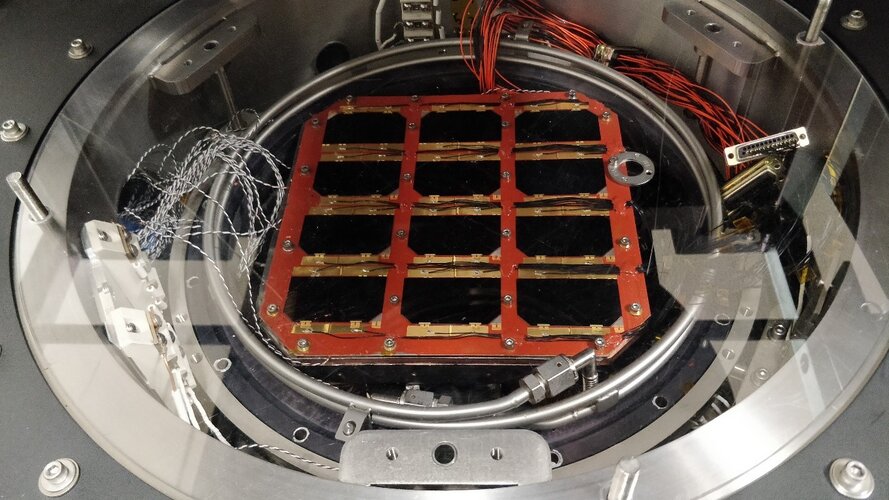 Image:
Solar cell system
Image:
Solar cell system 
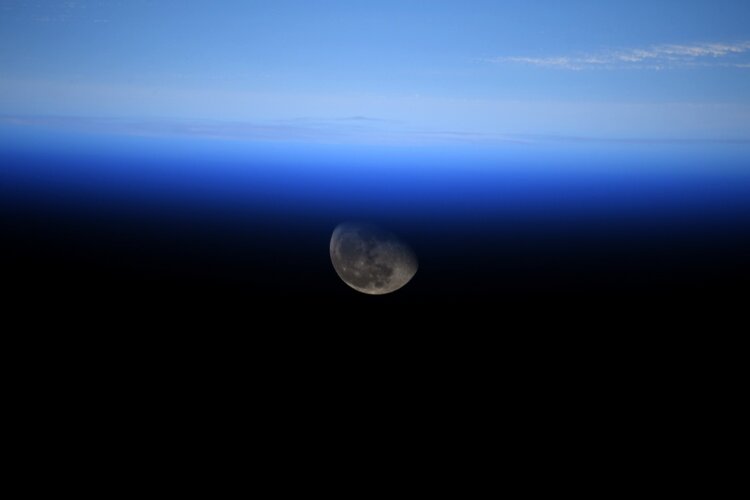 Image:
To the Moon!
Image:
To the Moon!